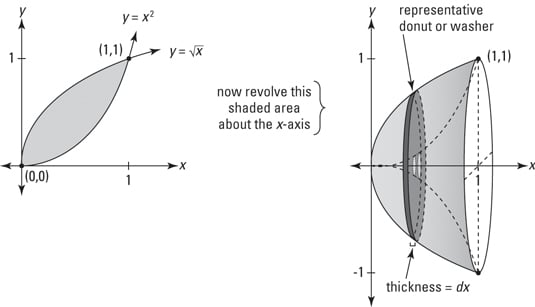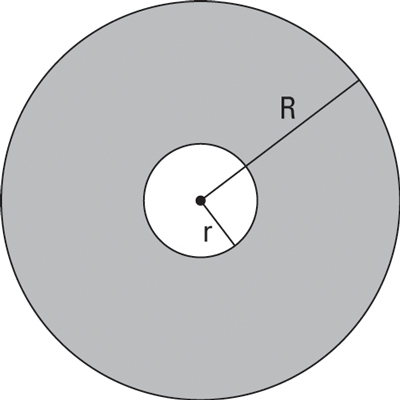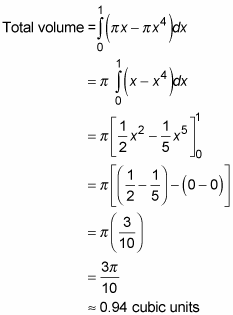How To Find The Volume Of A Shape
Geometry tells you how to figure the volumes of simple solids. Integration enables you to calculate the volumes of an endless variety of much more complicated shapes. If you take a round shape with a circular pigsty in the heart, you can use the washer method to find its volume by cut the shape into thin pieces and then calculation upwards the volumes of the slices. In that location's goose egg to information technology.
Here y'all get.
![]()
and generate a solid past revolving that area about the x-centrality.

A sideways stack of washers — simply add up the volumes of all the washers.
Merely retrieve: All the forces of the evolving universe and all the twists and turns of your life have brought you lot to this moment when you are finally able to summate the volume of this weird bowl-like shape — something for your diary. So what'due south the volume?
-
Determine where the two curves intersect.

So the solid in question spans the interval on the x-centrality from 0 to ane.
-
Figure the area of a cross-sectional washer.

The figure immediately above shows a typical cross department of the 3-D shape, but turned so yous're looking at it caput on. Each piece has this washer shape and then its area equals the area of the entire circle minus the area of the pigsty.
The area of the circle minus the hole is

where R is the outer radius (the big radius) and r is the radius of the hole (the little radius).

-
Multiply this area past the thickness, dx, to get the volume of a representative washer.

-
Add upward the volumes of the washers from 0 to ane by integrating.

Focus on the elementary fact that the area of a washer is the area of the entire disk,
![]()
minus the area of the hole,

When you integrate, you lot get

This is the same, of form, as

which is the formula given in nigh books. But if you just learn that by rote, y'all may forget it. You're more probable to remember how to do these problems if yous sympathise the simple big-circle-minus-little-circle thought.
About This Article
This article can be found in the category:
- Calculus ,
Source: https://www.dummies.com/article/academics-the-arts/math/calculus/how-to-find-the-volume-of-a-shape-using-the-washer-method-of-integration-192156/
Posted by: singhfattle.blogspot.com

0 Response to "How To Find The Volume Of A Shape"
Post a Comment